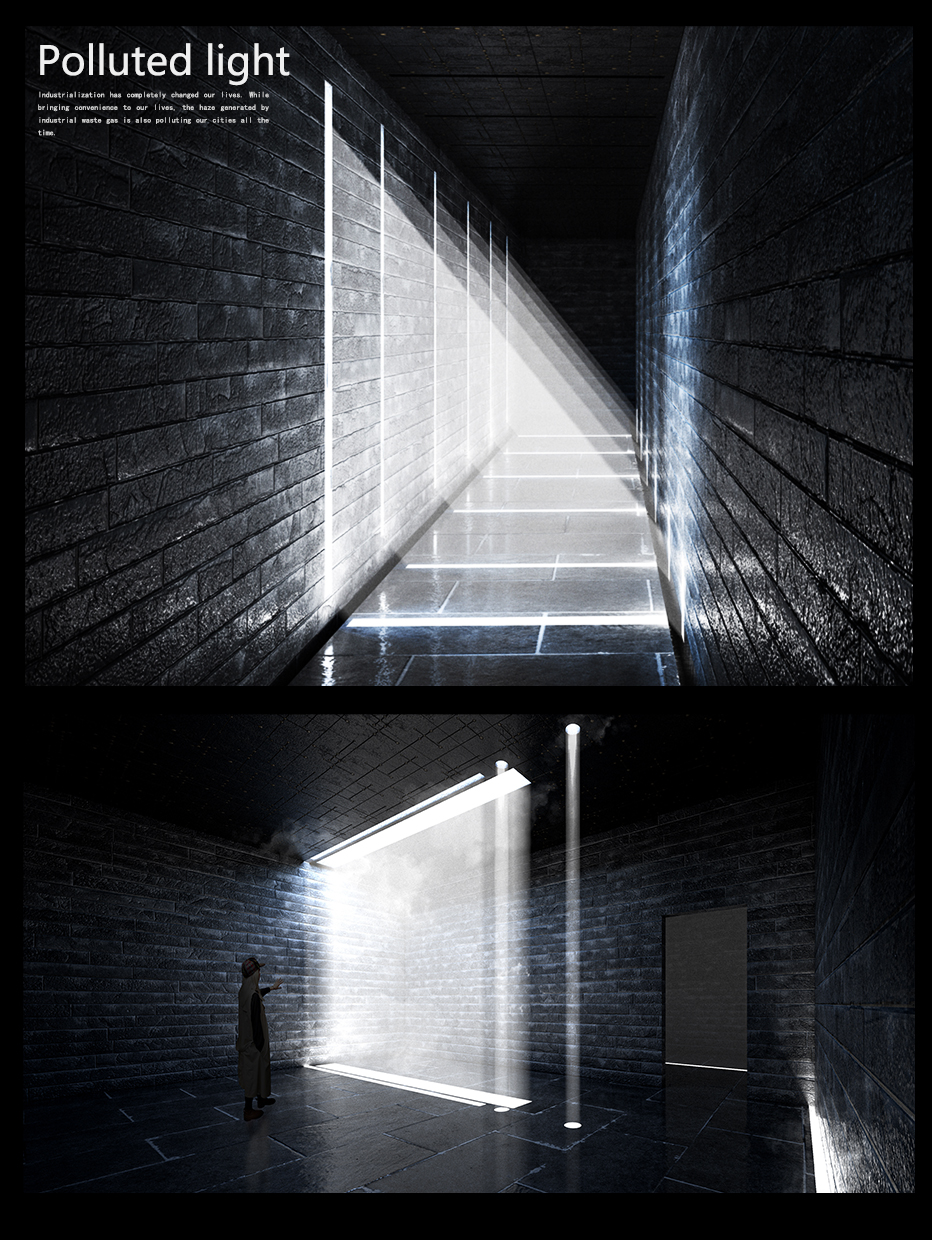Polluted Light

Category
Daylight investigations - Region 4: Asia and Oceania
Students
XuZiqi
KouNingbo
SongBingwen
School
Dalian University of Technology
Country
China
Download
Download ↓
Industrialization has completely changed our lives. While bringing convenience to our lives, the haze generated by industrial waste gas is also polluting our cities all the time. Air pollution not only takes away our beautiful skies, but also countless lives. In hazy weather, we find that the light in the air will become visible due to the Tyndall effect, and the haze turns the air into a sol, which scatters the visible light. This property makes light visible, so although this material has no real entity, it does act as a space divider. Therefore, we thought of using the polluted light as a building material, and using it as a material for an exhibition hall to exhibit the hazards of haze. In such a building, except for a few walls and roofs, there are no partitions and columns, and all these elements are constructed by polluted light. In this way, people can really see the smog and realize the impact of the smog on our world.We extracted two elements as the basis of light structures: walls and columns, which are the basic units to divide the space inside the building. In the exhibition hall, these two materials composed of light will play the same role as the real building components, At the same time, they are also part of the exhibits in the exhibition hall, allowing people to really see the light polluted by the air. The building is divided into three parts, the first part is completed with only six thick wall panels and a roof with holes and elongated holes on one side. The interior space is divided by columns and walls composed of light rays, which are injected from the holes in the roof by a set of refracting devices, thus forming rows of walls and rows of columns. Through this division method close to the Mies flow space, the interior of the building is divided into several interconnected and permeable spaces. The air in this space is the same as the outside, so it will show different scenes in different weather, from the blurred light wall in low haze state to the clear light wall in high haze state, so that people can really feel the pollution in their own city. Then, people will turn to the second part, where there is only one long corridor, there are several small windows on the wall, which are sprinkled to the ground under the Tyndall effect, forming a series of oblique light walls, where people are here Passing through the layers of light walls, you can change your mood and calm down in the promenade. And go to the third part. These small halls are closed to the outside, and the three small halls achieve different humidity through humidification devices, simulating high-pollution, medium-pollution, and low-pollution air. Corresponding to different intensities Tyndall effect and light wall. Here, people can clearly recognize the impact of different air pollution on the entire exhibition hall space, compare with what they saw in the first exhibition hall, and realize the pollution situation in their own city, thus attracting people’s attention to air governance. In order to ensure that the space can achieve the ideal effect under different lighting conditions, the exhibition hall has two devices for providing light. One is to directly inject light into the holes in the roof during the day to form light walls and columns. The second is the floor lamp powered by solar energy on the ground, which emits light at night to construct light walls and columns. Make sure that people can visit the showroom in different weathers.

































